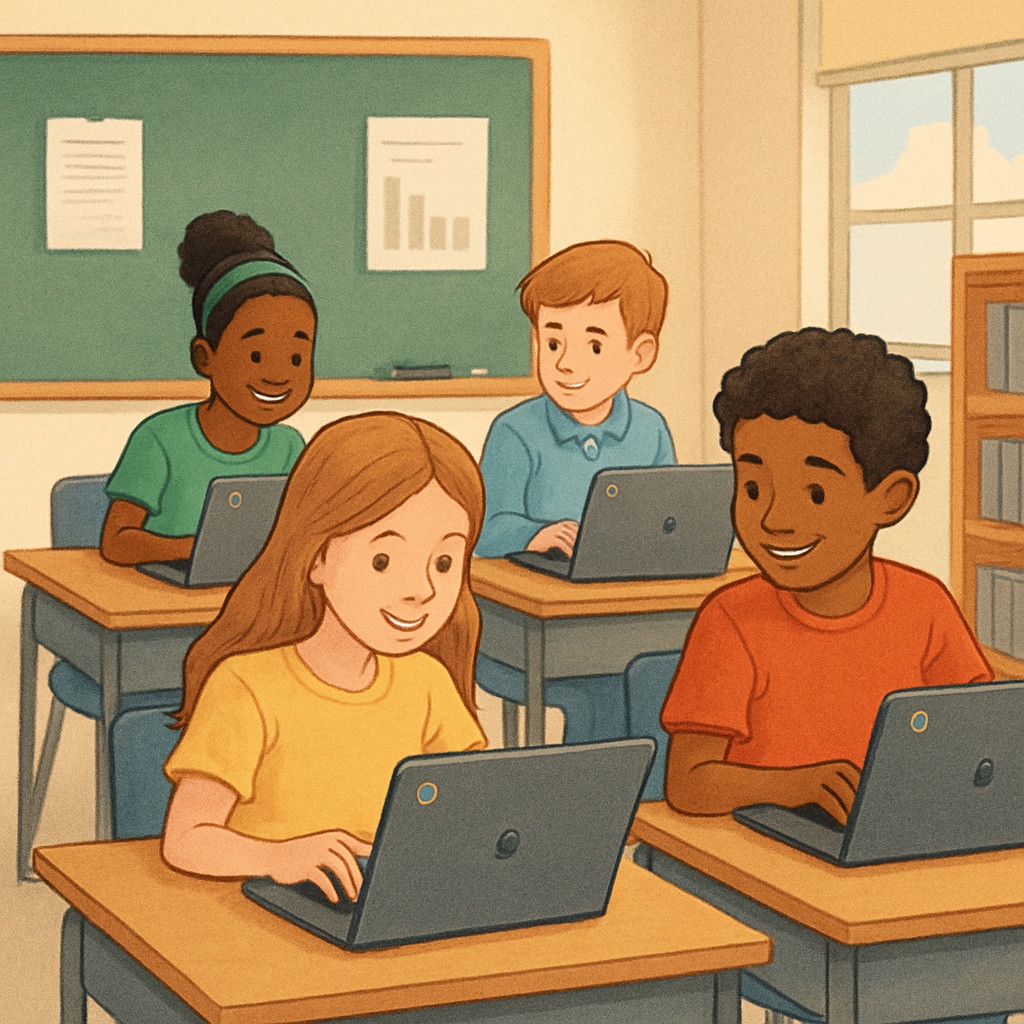In today’s K-12 education landscape, tools like Chromebooks have revolutionized learning by enhancing efficiency and accessibility. These education technology (EdTech) tools streamline assignments, provide instant access to resources, and improve collaboration. However, a growing concern is whether this focus on efficiency is unintentionally undermining students’ critical thinking abilities and curiosity. As we embrace EdTech, it is vital to evaluate its impact on fostering a balanced educational experience that promotes both convenience and deep, reflective learning.

Has Efficiency Become an Obstacle to Deep Thinking?
Education technology has undeniably made learning more efficient. Platforms like Google Classroom, combined with devices such as Chromebooks, allow students to complete tasks faster and access a broad range of knowledge at their fingertips. For example, instead of spending hours in a library, students can find information with a quick Google search. However, this very ease of access may reduce the opportunity for deep, critical thinking.
Critical thinking—the ability to analyze, evaluate, and synthesize information—requires time and mental effort. When students rely heavily on automated tools and pre-packaged solutions, they risk bypassing the critical processes that develop intellectual curiosity. As a result, the pursuit of quick answers might overshadow the journey of asking “why” and “how.”
Balancing Technology and Thoughtful Learning
To ensure that EdTech tools like Chromebooks complement rather than compromise student development, educators must adopt balanced strategies. Here are a few approaches:
- Encourage Inquiry-Based Learning: Incorporate activities that require students to ask open-ended questions and research multiple perspectives, ensuring they engage critically with information.
- Limit Over-Reliance on Automation: While tools like spellcheck and auto-summarization can save time, students should also be guided to develop these skills manually to enhance their cognitive abilities.
- Blend Digital and Traditional Methods: Incorporate offline activities, such as debates or hands-on experiments, to stimulate deeper thought processes.
For example, schools can use Chromebooks for initial research but follow up with face-to-face discussions or essays requiring synthesis and analysis. This combination ensures technology serves as a tool for learning, not a crutch.

The Role of Educators in Shaping EdTech Usage
Ultimately, the responsibility to balance efficiency and critical thinking lies with educators. Teachers can model critical thinking by asking probing questions, challenging assumptions, and encouraging students to defend their ideas. Additionally, professional development programs can help educators stay informed on how to integrate EdTech effectively without compromising deeper learning goals.
For instance, teachers can use platforms like Google Forms for quick assessments while reserving class time for critical discussions and problem-solving exercises. Such practices enable students to benefit from the efficiency of EdTech while still engaging in meaningful intellectual activities.
Conclusion: Striking the Right Balance
Education technology, including Chromebooks, offers remarkable benefits in terms of efficiency and accessibility. However, it is crucial to recognize and address its potential drawbacks, particularly regarding students’ critical thinking skills. By finding a balance between leveraging technology for efficiency and fostering deep thought, educators can ensure that students are not only well-equipped for the modern world but also capable of analyzing and solving complex problems. After all, the ultimate goal of education is not just to learn facts but to develop the skills necessary to navigate an ever-changing world thoughtfully and effectively.
Striking this balance is not an easy task, but it is a necessary one. As technology continues to evolve, so too must our strategies for using it in the classroom. By prioritizing both efficiency and critical thinking, we can ensure that EdTech enriches rather than diminishes the educational experience.
For further reading on the impact of EdTech, visit Britannica’s Educational Technology Overview.
Readability guidance: This article balances short paragraphs with actionable insights. Transition words are used to maintain flow, and strategies are summarized in a list for clarity.


